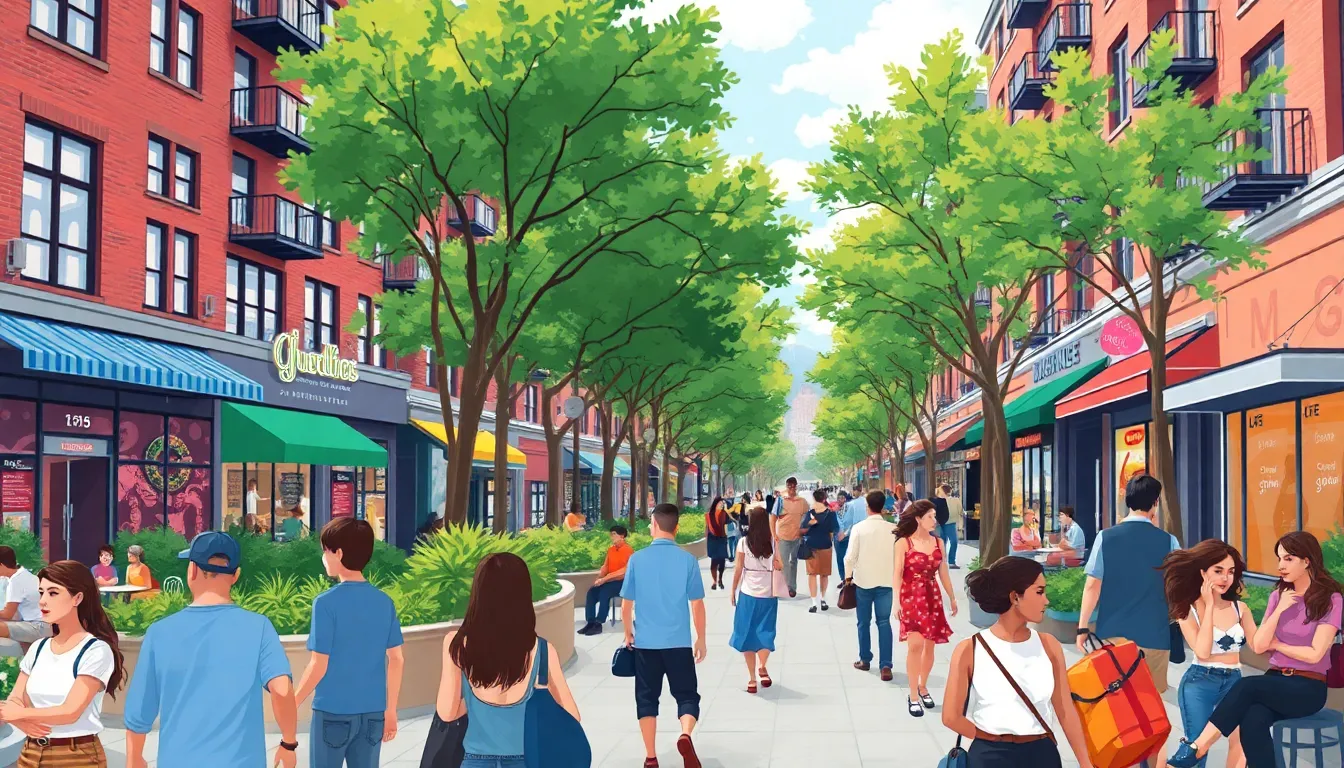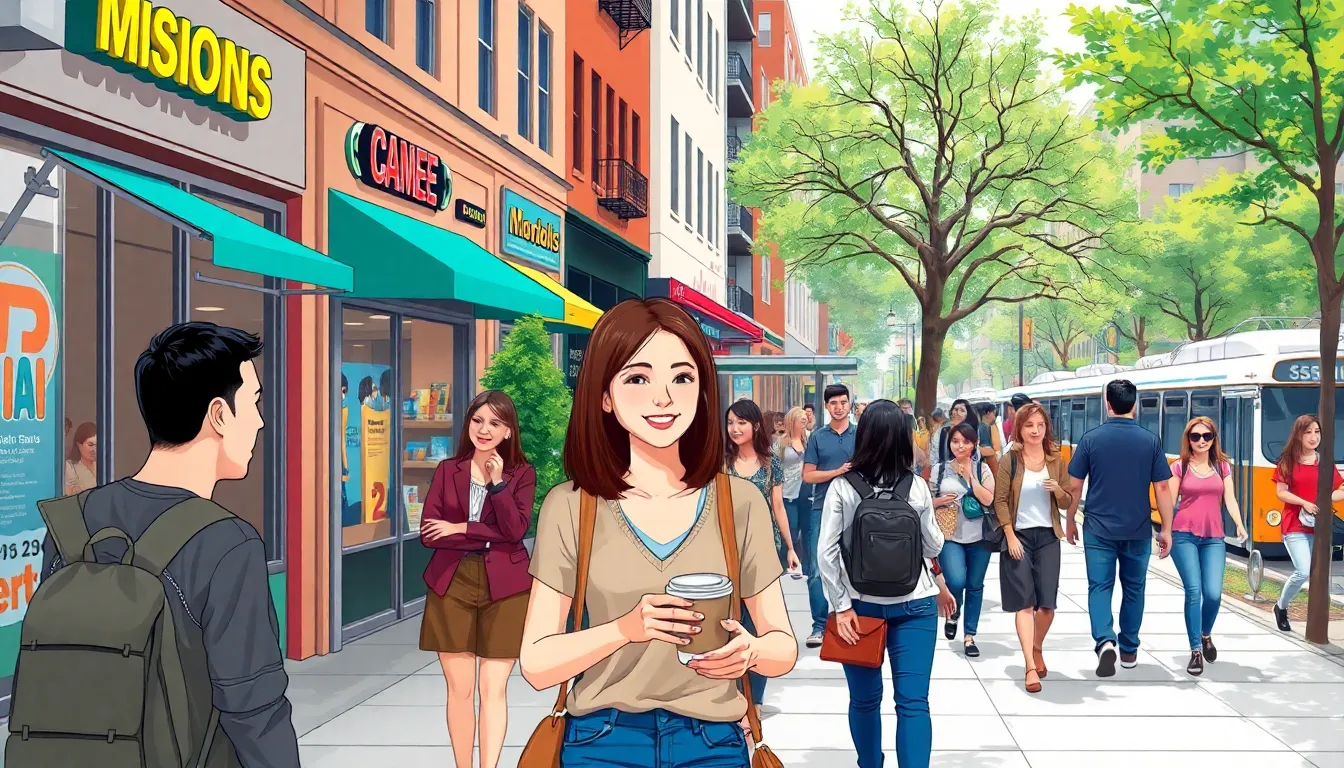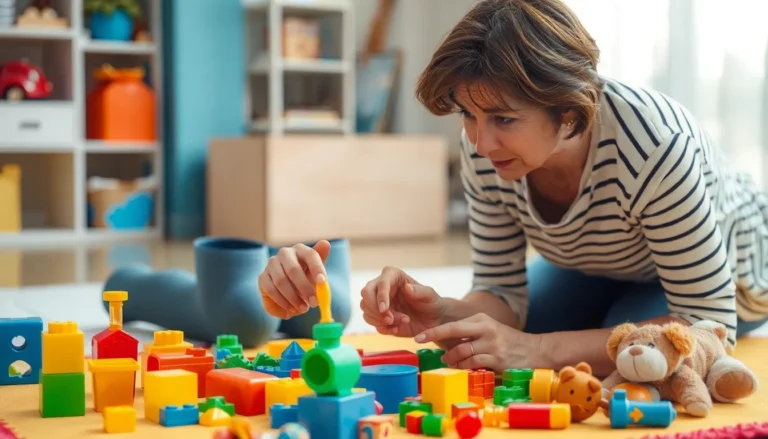Table of Contents
ToggleFinding the perfect apartment is like dating—it’s all about the neighborhood. You wouldn’t want to settle down in a place that feels more like a horror movie set than a cozy home. A great neighborhood can turn a simple apartment into a sanctuary, filled with coffee shops, parks, and maybe even a taco truck that knows your name.
Overview of Apartment Neighborhoods
Selecting the right apartment neighborhood significantly impacts the living experience. A vibrant and welcoming community can transform an apartment into a true home.
Importance of Choosing the Right Neighborhood
Choosing an apartment in the right neighborhood shapes daily life. A neighborhood’s safety, amenities, and atmosphere directly affect happiness. Proximity to workplaces, schools, and public transportation enhances convenience. Diverse social opportunities in engaging neighborhoods foster connections with others. Access to essential services, such as grocery stores and healthcare, promotes well-being.
Factors to Consider in Your Apartment Search
Considering specific factors streamlines the apartment search. Evaluate the local crime rate to ensure safety. Assess public transportation options for ease of commuting. Review nearby amenities like parks and gyms for recreational activities. Look into school districts if education is a priority. Determine the overall vibe of the neighborhood, such as bustling or quiet, to match personal preferences. Explore future development plans that could impact property values.
Popular Apartment Neighborhoods

Apartment neighborhoods vary significantly between urban and suburban settings. Each area offers unique benefits tailored to different lifestyles.
Urban Areas
Urban areas stand out for their lively atmosphere and rich cultural experiences. Residents find a wealth of dining options, entertainment venues, and public transport accessibility. Many urban neighborhoods feature parks that provide the perfect balance between nature and city life. Safety levels might differ, so researching local crime rates remains essential. Vibrant scenes and community events enhance social connections among residents. Urban living often aligns with a fast-paced lifestyle, attracting those who thrive in dynamic environments.
Suburban Areas
Suburban neighborhoods present a different appeal focused on family-friendly environments. Schools frequently rank highly in suburban regions, supporting families seeking quality education for their children. Green spaces, like parks and recreational facilities, promote outdoor activities for all ages. Residents enjoy quieter streets and a strong sense of community, fostering lasting relationships. Suburban areas typically offer well-connected public transport options, ensuring accessibility to urban centers. Future development plans can influence local property values, making research crucial for potential buyers.
Amenities and Services in Apartment Neighborhoods
Apartment neighborhoods often offer a variety of amenities and services that enhance the living experience. Access to essential conveniences significantly improves day-to-day life.
Public Transportation
Public transportation options increase a neighborhood’s appeal. Bus stops and train stations allow quick commutes to workplaces and schools. Proximity to transport hubs often saves residents time and offers flexibility. Reliable public transport reduces reliance on personal vehicles, contributing to lower transportation costs. For example, neighborhoods with subway access can significantly decrease travel time to major city destinations. Residents appreciate easy connections for errands or leisure, reinforcing the community’s livability.
Parks and Recreation
Parks and recreational facilities play a vital role in neighborhood attractiveness. Outdoor spaces provide residents with areas to relax and socialize. Access to parks encourages physical activity, benefiting overall health and wellness. Families often seek nearby playgrounds, while individuals may prefer walking trails for exercise. A community that incorporates parks fosters social interactions and strengthens neighborhood bonds. For instance, well-maintained green spaces enhance aesthetic appeal and increase property values, making them a priority for prospective renters.
Safety and Security Considerations
Safety and security play a vital role in selecting the right apartment neighborhood. These factors significantly influence comfort and peace of mind for residents.
Crime Rates
Researching local crime rates offers crucial insights into neighborhood safety. Many cities provide online crime statistics, showing incident types and frequencies. Neighborhoods with lower crime rates typically reflect a higher sense of security and community. Prospective renters often benefit from reviewing local crime maps. Engaging with community forums can also reveal resident experiences related to safety. Crime rates frequently vary between urban and suburban areas, impacting living choices. Residents often prefer neighborhoods where crime trends show improvement over time.
Community Resources
Access to community resources strengthens neighborhood safety and security. Local police and fire stations enhance emergency response times. Hospitals and urgent care facilities contribute to overall safety by ensuring quick medical assistance. Community centers often host safety programs, fostering collaboration between residents and law enforcement. Libraries provide educational resources, promoting well-informed residents. A neighborhood’s proximity to these services reveals its commitment to resident well-being. Moreover, supportive local organizations create a sense of belonging and vigilance among community members. Access to these resources reassures potential renters of their safety in the area.
Lifestyle and Community Vibe
Neighborhoods shape the lifestyle of residents. They create environments that foster connections and community spirit, making them crucial in the apartment search process.
Local Culture and Events
Local culture enhances the community atmosphere. Many neighborhoods host festivals, farmers’ markets, and cultural events, enriching residents’ lives. Art walks or open mic nights provide opportunities for engagement. Prominent landmarks and local history create an informed connection to the area. Restaurants featuring diverse cuisines reflect the community’s diverse makeup. Community centers often organize classes and workshops, allowing for continuous learning and cultural exchange.
Social Activities and Gatherings
Social activities bring neighbors together. Many apartment neighborhoods offer group fitness classes, book clubs, or game nights at local venues. Organizations frequently sponsor community picnics or holiday celebrations, encouraging residents to mingle. Year-round sports leagues allow for friendly competition and camaraderie. Establishing connections through shared interests deepens the sense of belonging. Local social media groups keep everyone informed about upcoming events and gatherings, ensuring no one feels left out.
Finding the right apartment goes beyond just the space itself; it’s about the neighborhood that surrounds it. A vibrant community filled with amenities and social opportunities can significantly enhance daily life and overall happiness. By considering factors like safety, accessibility, and local culture, prospective renters can make informed decisions that align with their lifestyle needs.
Whether drawn to the energy of urban living or the tranquility of suburban life, understanding the unique aspects of each neighborhood is crucial. Ultimately, a well-chosen apartment neighborhood not only provides a place to live but also fosters connections and enriches the living experience.








